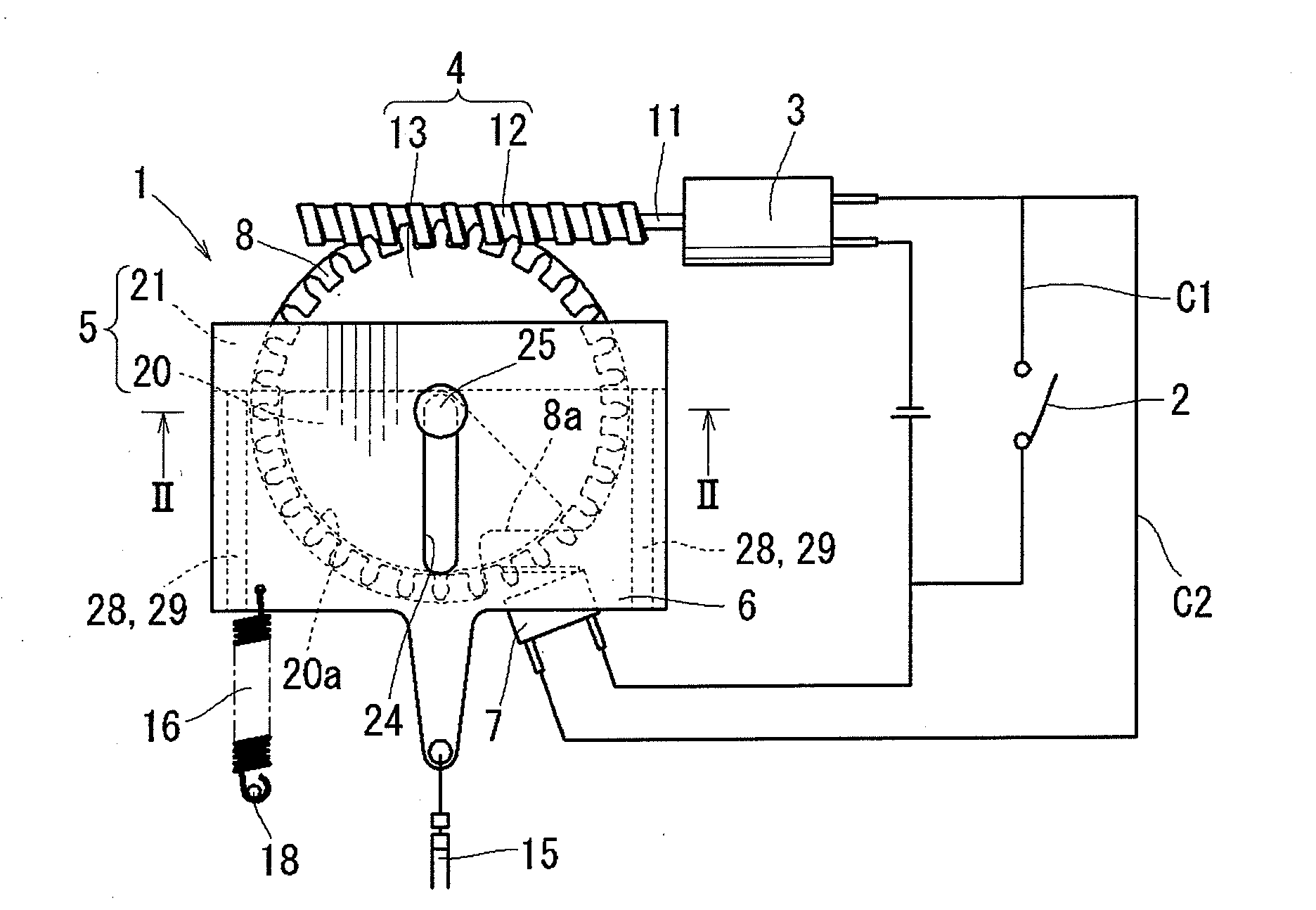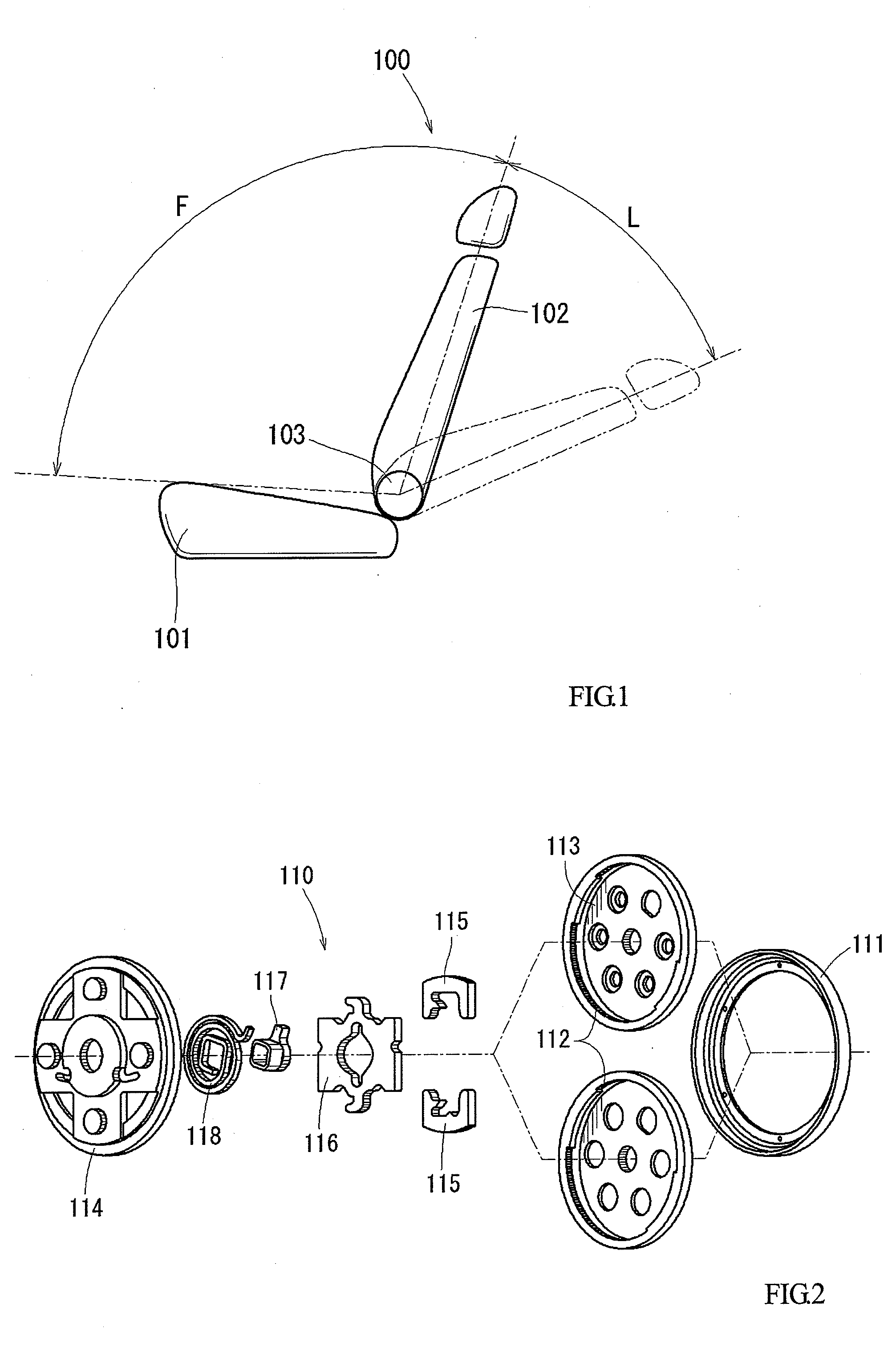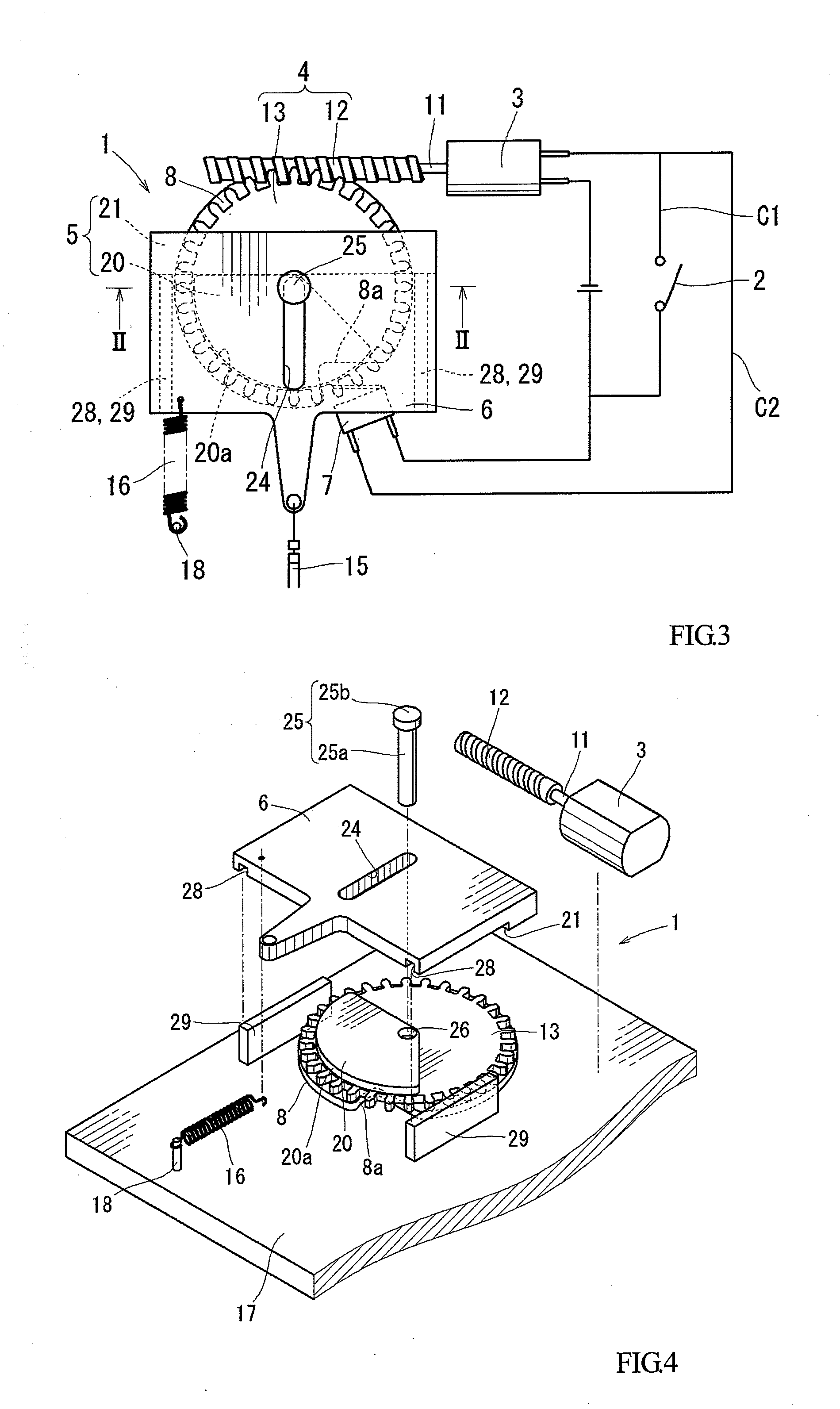Lock releasing mechanism
- Summary
- Abstract
- Description
- Claims
- Application Information
AI Technical Summary
Benefits of technology
Problems solved by technology
Method used
Image
Examples
first embodiment
[0045]A first embodiment of the lock releasing mechanism 1 is shown in FIG. 3 to FIG. 9. The lock releasing mechanism 1 may be an lock releasing mechanism by being constructed within a casing formed into a predetermined shape, or may be constructed directly on a board member such as the power seat. In this specification, these members are not specifically discriminated, and the bottom surface of the casing or the board member is shown as a substrate. In this specification or the drawings, the description and illustration are given in a state in which the lock releasing mechanism 1 is constructed on the substrate arranged horizontally. However, the lock releasing mechanism is not limited thereto, and the lock releasing mechanism 1 may be constructed on a side surface of the substrate arranged vertically or obliquely, or may be constructed on a lower surface of the horizontal substrate. In other words, it is also possible to be mounted on a vehicle seat or the like in a state of upsid...
second embodiment
[0056]FIG. 11 to FIG. 14 show a second embodiment. The second embodiment is an example in which converting means, that is, pressing means and receiving means are modified. More specifically, as shown in FIG. 11, which is a plan view showing the initial state of the lock releasing mechanism 1 according to the second embodiment, in which a pressing projection 30 by itself is formed into an arcuate shape having a certain length in the circumferential direction, and the outer peripheral surface thereof in the radial direction is formed into an arcuate surface 30a. The point that the radius of curvature thereof is the same as the base gear 13 is the same as the arcuate surface 20a in the first embodiment. In contrast, a receiving projection 31 which comes into abutment with the pressing projection 30 is formed on the lower surface of the slider 6 as a deviated position so as to project in an elongated strip shape.
[0057]The lock releasing mechanism 1 according to the second embodiment is ...
third embodiment
[0058]In the first embodiment or the second embodiment, the worm gear 12 and the base gear 13 of the motor 3 are meshed directly with each other. However, one or a plurality of transmission gears may be interposed between the worm gear 12 and the base gear 13 in order to change the rotating speed of the base gear 13. FIG. 15 shows a third embodiment as an example of the lock releasing mechanism 1 in which the transmission gear is interposed between the worm gear 12 and the base gear 13. In the third embodiment, the rotating speed of the base gear 13 is reduced by interposing two first and second transmission gears 41, 42 between the worm gear 12 and the base gear 13. More specifically, the worm gear 12 and a large diameter portion 41a of the first transmission gear 41 mesh with each other, a small diameter portion 41b of the first transmission gear 41 and a large diameter portion 42a of the second transmission gear 42 mesh with each other, and a small diameter portion 42b of the sec...
PUM
 Login to View More
Login to View More Abstract
Description
Claims
Application Information
 Login to View More
Login to View More - R&D
- Intellectual Property
- Life Sciences
- Materials
- Tech Scout
- Unparalleled Data Quality
- Higher Quality Content
- 60% Fewer Hallucinations
Browse by: Latest US Patents, China's latest patents, Technical Efficacy Thesaurus, Application Domain, Technology Topic, Popular Technical Reports.
© 2025 PatSnap. All rights reserved.Legal|Privacy policy|Modern Slavery Act Transparency Statement|Sitemap|About US| Contact US: help@patsnap.com



